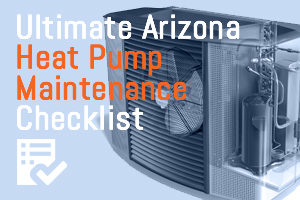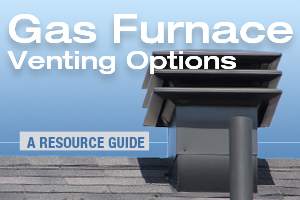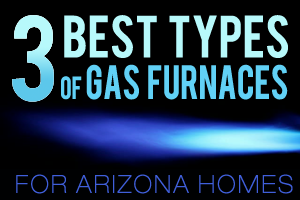 For many Arizona homeowners, the heating and cooling solution of choice is a heat pump. Choosing a heat pump means getting fantastic energy efficiency and being able to control the temperature in your home effectively. However, despite the extreme utility of heat pumps, they still need regular, preventative maintenance to make sure you don’t experience big problems down the line.
For many Arizona homeowners, the heating and cooling solution of choice is a heat pump. Choosing a heat pump means getting fantastic energy efficiency and being able to control the temperature in your home effectively. However, despite the extreme utility of heat pumps, they still need regular, preventative maintenance to make sure you don’t experience big problems down the line.
If you’re interested in learning how to maintain your heat pump over a long period of time, there are a few tasks that you should prioritize to make sure your home is always at its optimal temperature. Read this heat pump maintenance checklist so that you can make sure the heat pump in your home is always functioning the way that you need and deserve.
Examine Your Thermostat
One of the most important parts of preventative maintenance plans for heat pumps is to make sure that your thermostat is working the way that it should. When your thermostat is broken, it can’t communicate with your heat pump, which means you have no way of setting the temperature in your home. If your heat pump does not respond to your thermostat, it may mean you need to schedule heat pump repair.
Lubrication is Key
Although heat pumps do not have as many moving parts as other heating and cooling solutions, they do have a few moving pieces that can experience wear and tear over time. To make sure that these parts function as long as possible, you should check periodically to make sure that they are properly lubricated. Maintaining a heat pump is easy when you keep your moving parts lubricated.
Keep the Electricity Flowing
If your heat pump simply will not turn on no matter what you do, a likely cause is a problem with your electrical connections. Make sure that all wires, both inside and outside of your house, are hooked up securely, and be certain that the breaker that powers your heat pump is in the on position. If none of these solutions work, then you should probably consider Scottsdale heating repair.
Clean Your Components
The blower component of your heat pump is one of the most important pieces your system possesses and is responsible for circulating the air in your home. If no air is coming from your system, even when your heat pump is clearly on, it usually indicates a problem with the blower component. Regularly make sure that your blower is working and that it comes on whenever your heat pump is active.
Check Your Air Filters
For your heat pump to work at its optimal level, air must be able to move freely throughout your home, and this can be a problem if you have clogged or dirty air filters. A simple and affordable heat pump maintenance task is to regularly clean and replace the air filters within your home, which will ensure air can move unobstructed.
Take a Look at the Heat Exchanger
The main functioning of a heat pump is to move warm air inside and outside of your home, and this action is powered by the heat exchanger. If your heat exchanger doesn’t work, neither will your heat pump. During any maintenance check, be sure that you or your technician inspect the heat pump to make sure that it is working.
To make sure that your heat pump maintenance checklist includes the proper tasks, you need to hire a knowledgeable Scottsdale residential heat pump repair company. Your repair company can go over maintenance tasks with you and help you keep your heat pump up and running.
____________________________________________
Contact the heating experts at Scottsdale Air Heating & Cooling to repair your heating unit for the winter. Email us or call 480-359-7141 now!
Read related articles:
- 3 Best Types of Gas Furnaces for Arizona Homes
- Residential Heating Repair: Emergency vs Routine
- How Does a Heat Pump Work with a Furnace?
Ultimate Arizona Heat Pump Maintenance Checklist
 If the heating system in your Tempe home is no longer working the way that you need, it might be time for a heating repair. Unfortunately, if you’ve never had to repair your heating system before, you might be worried about how much you’ll have to pay to get your system back up and running.
If the heating system in your Tempe home is no longer working the way that you need, it might be time for a heating repair. Unfortunately, if you’ve never had to repair your heating system before, you might be worried about how much you’ll have to pay to get your system back up and running. If you’re like many homeowners in Arcadia, then the tool that you’ve chosen to heat your home is a gas furnace. There are many reasons that homeowners love gas furnaces, including impressive heating power and a high level of energy efficiency. However, there is one important factor of using a gas furnace that many homeowners fail to take into consideration: ventilation.
If you’re like many homeowners in Arcadia, then the tool that you’ve chosen to heat your home is a gas furnace. There are many reasons that homeowners love gas furnaces, including impressive heating power and a high level of energy efficiency. However, there is one important factor of using a gas furnace that many homeowners fail to take into consideration: ventilation. For homeowners in Phoenix looking to heat their homes efficiently and effectively, there is no better solution than a gas furnace. Modern gas furnaces provide a high level of efficiency and big heating power, providing the level of comfort that your family needs and deserves.
For homeowners in Phoenix looking to heat their homes efficiently and effectively, there is no better solution than a gas furnace. Modern gas furnaces provide a high level of efficiency and big heating power, providing the level of comfort that your family needs and deserves.